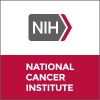
A Natural History Study of Children and Adults With Olfactory Neuroblastoma
Olfactory NeuroblastomaEsthesioneuroblastomaBackground: Olfactory neuroblastoma (ONB) is a rare cancer. It grows from tissue in the upper part of the nose cavity, related to the sense of smell and can affect a person s sense of smell. Researchers want to better understand the health problems of people with ONB. This may help them design better treatment and supportive care studies. Objective: To better understand ONB-the course of the disease, tumor characteristics, response to treatments, and management of the treatment. Eligibility: People ages 3 years and older who have ONB. They must enroll in NIH studies #19-C-0016 and #18-DC-0051. Design: Participants will be screened with a medical history and medical record review. Participants do not have to visit NIH. Participants will give a blood sample. They will complete surveys to assess their emotional and physical wellbeing and needs. Leftover tissue from biopsies and surgeries will be collected. Participants will take smell tests. They will smell items and answer questions about them. Participants may take taste tests. They will get plastic taste strips that they will move around their mouth to determine the taste. Participants may have a physical exam. Their performance status may be assessed. Participants may give blood, saliva, urine, and nasal secretion samples. Participants may have computed tomography and/or magnetic resonance imaging scans. Participants may have one or more tumor biopsies. Participants will talk to the research team about the results of their medical record/tests evaluation. The team will recommend how to best manage and treat their disease. Participants may give samples and complete surveys every 12 months. Their medical records will be reviewed every year. They will be monitored for the rest of their life.

Engineering Immune Organoids to Study Pediatric Cancer
Brain TumorKidney Tumor2 moreTo engineer immune organoids from pediatric patient tissues using induced-pluripotent stem cells (iPSC)

A Post-Authorisation Safety Study Patient Registry of Patients With Neuroblastoma Being Treated...
NeuroblastomaThis is a non-interventional, multi-national, observational, prospective patient registry to further evaluate the effectiveness and safety of dinutuximab beta - a monoclonal immunoglobulin G 1 (IgG1) antibody, to obtain information on survival, pain severity and incidence of neuro-toxicity, visual impairment, capillary leak syndrome, cardiovascular events, hypersensitivity reactions and long-term safety.

Psychosocial Situation of Children With Rare Solid Abdominal Tumors and Their Families
NeuroblastomaNephroblastoma1 moreFamilies of children with rare diseases (i.e., not more than 5 out of 10.000 people are affected) are often highly burdened with fears, insecurities and concerns regarding the affected child and his/her siblings. The aim of the present research project is to examine the psychosocial burden of the children with rare solid abdominal tumors and their family in order to draw attention to a possible psychosocial care gap in this population.

Biological Characterisation of High Risk CHildhood Cancer in Children, Adolescents and Young Adults...
NeuroblastomaRhabdomyosarcoma4 moreMethodology: Prospective, multicentric, open, non-randomised, non-therapeutic, interventional study

Comprehensive Omics Analysis of Pediatric Solid Tumors and Establishment of a Repository for Related...
SarcomaEndocrine Tumors3 moreBackground: - Laboratory investigators who are studying common childhood cancers are interested in developing a tissue repository to collect and store blood, serum, tissue, urine, or tumors of children who have cancer or adults who have common childhood cancers. To develop this repository, additional samples will be collected from children and adults who have been diagnosed with common childhood cancers such as leukemia and tumors of the central nervous system. Objectives: - To collect and store blood, serum, tissue, urine, or tumor samples of children who have cancer or adults who have common childhood cancers. Eligibility: Individuals who have been diagnosed with a common childhood cancer (e.g., leukemia) regardless of patient age. Children, adolescents, and adults who have been diagnosed with a type of cancer more commonly found in adults. Design: Extra blood, serum (the liquid part of blood), tissue, urine, or tumor samples will be collected from participants at a time when sampling is required for medical care or as part of a research study. No additional procedures will be performed for the sole purpose of obtaining additional tumor tissue, aside from what is required for clinical care.

DOTATOC PET/CT for Imaging NET Patients
Neuroendocrine TumorsInsulinoma14 moreNeuroendocrine tumours (NETs) are generally slow growing, but some can be aggressive and resistant to treatment. Compared to healthy cells, the surface of these tumor cells has a greater number of special molecules called somatostatin receptors (SSTR). Somatostatin receptor scintigraphy and conventional imaging are used to detect NETs. This study proposes 68Gallium(68Ga)-DOTATOC positron emission tomography/computed tomography (PET/CT) is superior to current imaging techniques. The goal is to evaluate the safety and sensitivity of 68Ga-DOTATOC PET/CT at detecting NETs and other tumors with over-expression of somatostatin receptors.

Allogeneic Hematopoietic Stem Cell Transplantation for 4/M Neuroblastoma
NeuroblastomaNeuroblastoma (NB) is the most common extracranial solid tumor of embryonal origin in children. According to the International Neuroblastoma Risk Group (INRG) staging criteria and the International Neuroblastoma Staging System (INSS) ,NB preoperative staging is divided into L1, L2, M and Ms stages, the postoperative staging is divided into 1 to 4 stages and 4s stage. Among them, 4/M stage is of the highest degree of malignancy and the worst prognosis. Despite the aggressive combination therapy, the 5-year survival rate (OS) is still less than 15%, and the 2-year relapse rate is 80%. Currently, no effective treatment is accessible for refractory/relapsed stage 4/M NB after completing conventional therapy. In hematopoietic stem cell transplantation (HSCT) , conditioning regimen with high-dose radiotherapy and chemotherapy is implemented to eradicate tumor cells and abnormal clonal cells in the patient, block the pathogenesis, and restore the patient's hematopoietic and immune systems by transplanting normal hematopoietic stem cells. According to the source of hematopoietic stem cells, HSCT can be divided into two types: autologous hematopoietic stem cell transplantation (auto-HSCT) and allogeneic hematopoietic stem cell transplantation (allo-HSCT). It has been confirmed that benefiting from the graft versus tumor(GVT) effect, allo-HSCT can clear residual lesions in refractory/relapsed NB patients post-auto-HSCT,and prolong the survival time of patients. Our center has explored the conditioning regimen, treatment of residual tumor lesions before transplantation, and strategies to reduce transplantation-related death (TRM) and enhance the GVT effect. However, the sample size is small, and multicenter and larger sample size research are needed. This study will further observe the clinical efficacy and safety of allo-HSCT in the treatment of 4/M stage NB, and provide a new treatment method and option for 4/M stage NB.

Efficacy and Safety of Anlotinib, Irinotecan and Temozolomide in the Treatment of Refractory or...
Refractory or Recurrent Neuroblastoma in ChildrenNeuroblastoma is an embryonal tumor originated from primitive neural crest cells. It is the most common extracranial solid tumor in children. It is characterized by abundant blood vessels, rapid growth and early metastasis.With the gradual improvement of diagnosis and treatment technology, the survival rate of children with Neuroblastoma in China has been increasing year by year, but the Overall Survival is still lower than that in European and American countries, so new and efficient treatment methods are urgently needed in clinical practice.Anti-angiogenesis target therapy is an important component of the malignant tumor treatment, hydrochloric acid for Anlotinib has the anti-tumor angiogenesis and suppress tumor growth, Anlotinib currently in thyroid carcinoma, esophageal cancer, liver cancer, colorectal cancer, soft nest, cervical cancer, soft tissue sarcoma and so on the many kinds of cancer are conducting clinical trials, but in neuroblastoma application has not been reported.The purpose of this study was to explore the therapeutic effect and mechanism of Anlotinib and irinotecan combined with temozolomide in the treatment of refractory or recurrent Neuroblastoma in children.Neuroblastoma is an embryonal tumor originated from primitive neural crest cells. It is the most common extracranial solid tumor in children. It is characterized by abundant blood vessels, rapid growth and early metastasis.It accounts for 8%-10% of all malignant tumors in children, with an annual incidence of 0.3-5.5/100,000.The prognosis of Neuroblastoma was closely related to age at diagnosis, clinical stage, tumor pathological type, N-myc gene copy number and DNA index.According to the above five indicators, the Children's Oncology Group divided NB into low, medium and high risk groups.According to the 2013 Children's Oncology Group data, the current 5-year Overall Survival of low - and moderate-risk Neuroblastoma patients was 90%, while the Overall Survival of high-risk patients was only 50%.The current treatment of Neuroblastoma is a multidisciplinary combination of surgery, chemoradiotherapy and autologous stem cell transplantation.With the gradual improvement of diagnosis and treatment technology, the survival rate of children with NB in China has been increasing year by year, but the Overall Survival is still lower than that in European and American countries, so new and efficient treatment methods are urgently needed in clinical practice.

Computer Aided Diagnostic Tool on Computed Tomography Images for Diagnosis of Retroperitoneal Tumor...
Wilms' TumorNeuroblastoma4 moreThe aim of this study was to evaluate the diagnostic efficacy of computer aided diagnostic tool for retroperitoneal tumor using machine learning and deep learning techniques on computed tomography images in children.
